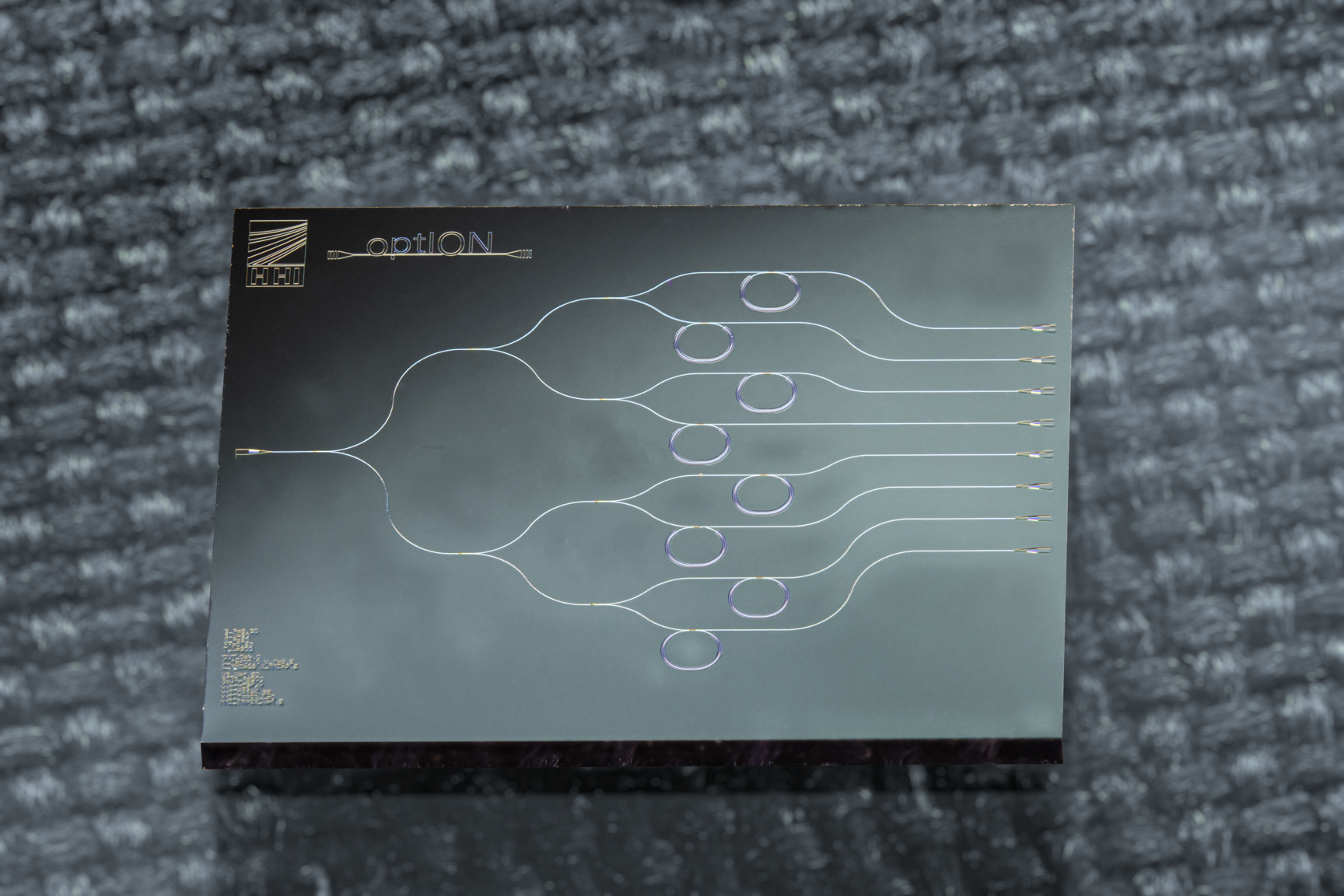
optION
Optical Microring Sensor for quantitative Analysis of Electrolytes
Project ID: 13GW0243B
Co-funded by the Federal Ministry of Education and Research in the framework of KMU-innovativ
Duration: February 2019 – October 2022
Motivation
In the human body, electrolytes such as sodium, potassium, calcium as well as the pH play a crucial role, e.g. for the water balance, and disturbances have dramatic consequences. For this reason, in medical diagnostics the concentration of electrolytes in blood is checked very frequently. However, the quantities of blood needed for the current analyzers are difficult to draw in neonates and infants, especially. Here, the optION project with a photonic sensor solution comes into play.
Goals and Innovations
In the optION consortium, four partners from different disciples have joined forces to develop a device concept that significantly reduces the amount of blood needed for such analysis: the companies Eschweiler and Scienion as well as the Charité - Universitätsmedizin Berlin and Fraunhofer HHI. For this purpose, microring resonators are used as photonic sensors that are produced in the silicon nitride waveguide platform of HHI. Their small diameter enables sensitive detection in the smallest volumes and parallel detection of different electrolytes via multiplexing of several rings. The specific assignment of the signal of a sensor to an electrolyte is ensured by the functionalization of the sensor surface with special ionophores by Scienion. The Biofluid Mechanics Laboratory of Charité is developing a microfluidics for these functionalized photonic sensors that allows for the precise application of small amounts of blood. Subsequently, the company Eschweiler combines sensors and fluidics with the control, read-out and evaluation electronics into a demonstrator device whose performance is evaluated with patient samples by the Institute for Laboratory Medicine, Clinical Chemistry and Pathobiochemistry of the Charité. The collaboration in the interdisciplinary consortium will enable the realization of an innovative concept from photonic chips via surface functionalization and microfluidics to device integration.
One goal of this research project is to establish a for the end user easy to handle photonic sensor. In the video above can be seen our demonstration of repeatable passive fiber optic coupling of single-mode waveguides in the µm range, which addresses exactly this challenge.

Photonic microring resonators form the basis for the biosensor. Shown here is a photonic sensor chip developed in the optION project with 8 sensor channels in the silicon nitride material platform. Due to its minimal dimensions, the low-cost SiN chip is ideally suited for integration in new types of highly sensitive microsystems.